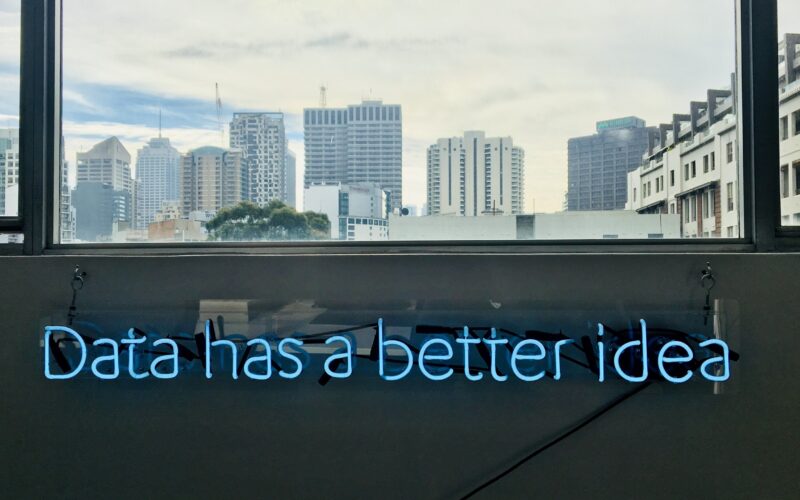While face-to-face meetups are on pause right now, many companies are seizing the opportunity to bring tech experts together virtually – which is exactly what specialist tech staffing company, Computer Futures, did in their latest webinar. For their #STEMSeries event, ‘The impact of automation and AI on people processes’, several experts in fields relating to Artificial Intelligence (AI) shared their advice on what the next phase of working will look like.
Some interesting questions were raised – what can we expect in a new working world? Will we be managed by machines? How will humans work with IoT and AI to create the new workforce?
One of the panelists included Charlie Isaacs, the CTO of Customer Connection (i.e. IoT) at Salesforce. As far as he’s concerned, he has “the coolest job” because he gets to play with gadgets, sensors, and other data collection devices every day. He shared a few key points around the adoption rate of AI and the stages we will need to overcome to continue building out the new workforce that people are calling the ‘new collar’ worker.
What do people think about AI?
Despite the broad use cases and rapidly increasing adoption rate of AI, it’s still misunderstood by many people. In recent months and years there have even been some high-profile technologists and business leaders who have said some scary things about AI. But fact is, AI is simply the combination of data and algorithms that equal outcomes. It’s this new powerful combination that the emerging workforce can use to enable them to do their jobs faster, easier and more effectively. Education will be a critical piece to increase future adoption and expansion of this revolutionary technology. As we improve data security and people demand more control over their data privacy, the future governance of how AI can be used is also up for discussion.
How is AI being used during the COVID-19 pandemic?
We’ve all been impacted by COVID-19 in various ways and after months of global quarantine, economies are starting to re-open and people are returning to work – understandably, there’s a rising concern about the impact on health. Specifically, how will people know that they’re safe at their office? This is where Salesforce has stepped up to the global challenge and created Work.com. As Charlie Isaacs shares in the roundtable webinar (which you can watch here), he discusses how the Salesforce team built an impressive dashboard that is helping businesses automate the process of getting back to work. The Work.com dashboard, referred to as the ‘Command Center,’ features things like employee wellness checks, shift management planning, manual contact tracing, Emergency Response (ER) management and more.
How does IoT and AI work together in Salesforce?
A large part of Charlie’s daily routine includes the way to collect data, aka IoT sensors. The IoT industry is projected to have more than 75 billion devices by 2025! It’s these IoT devices that are collecting every kind of data that is being stored and analyzed in Salesforce. Einstein, Salesforce’s AI is the first comprehensive AI for CRM. It’s an integrated set of AI technologies that makes Salesforce Customer 360 smarter – and as Charlie reminded us, Einstein is a standardized feature on the platform and can help with everything from lead scoring to case classification and beyond. There is an aspect of Einstein that will be retired shortly, Einstein voice assistant. It was initially created to compete in the market of Alexa and Google voice assistants.
Is AI Deceptive?
There are many conversations being had around the ethics of AI – specifically focusing on how it can and should be used in commercial business, governance, and beyond.
The power of AI is rapidly growing as more and more companies recognize the power of automation and AI. Some businesses are even replacing entire customer service and sales teams altogether, which brings us to the question – should companies disclose their use of AI? What are the ethics around disclosure of AI?
When a customer messages your website’s chatbot, do you disclose that they’re talking to an AI bot? Will it hurt sales if you do? A recent randomized experiment showed chatbots outperformed inexperienced sales people when they did not reveal they were automated, – this is compared to an 80% drop when they revealed they were a robot. As Salesforce has evolved, they’ve created a whole department around product ethics – Paula Goldman, VP, Chief Ethical and Humane Officer, leads the department’s goals of assessing products on their ethical use.
Is AI replacing people? What is the future of work with AI?
Will AI replace people? Ultimately, businesses will have to ask themselves how they want to build customer trust. The biggest detractor for people engaging with AI and automated customer service, sales, and other touch points, is around trusting that they will still be valued and taken care of properly. The burning question is what will the future of work with AI look like? Are robots going to completely take over? No, is the short answer, because people are getting the most value out of working alongside and being supplemented by AI. These are the new class of worker, the ‘New Collar.’
Peter Schwartz, author of “Art of the Longview,” Futurist, Sr. VP at Salesforce, discusses the concern around AI replacing jobs and discusses the automation of travel, banks, and others major industries that are experiencing great shifts and opportunities. For some great points around debunking AI myths, read his blog post here.
AI is a fast evolving space – and so are the projects, companies, and talent within this growing market. Don’t forget to watch the full video featuring Charlie Isaacs from Salesforce about AI; the future of jobs and the skillsets needed in the near future.
Watch the full video at the link below.


